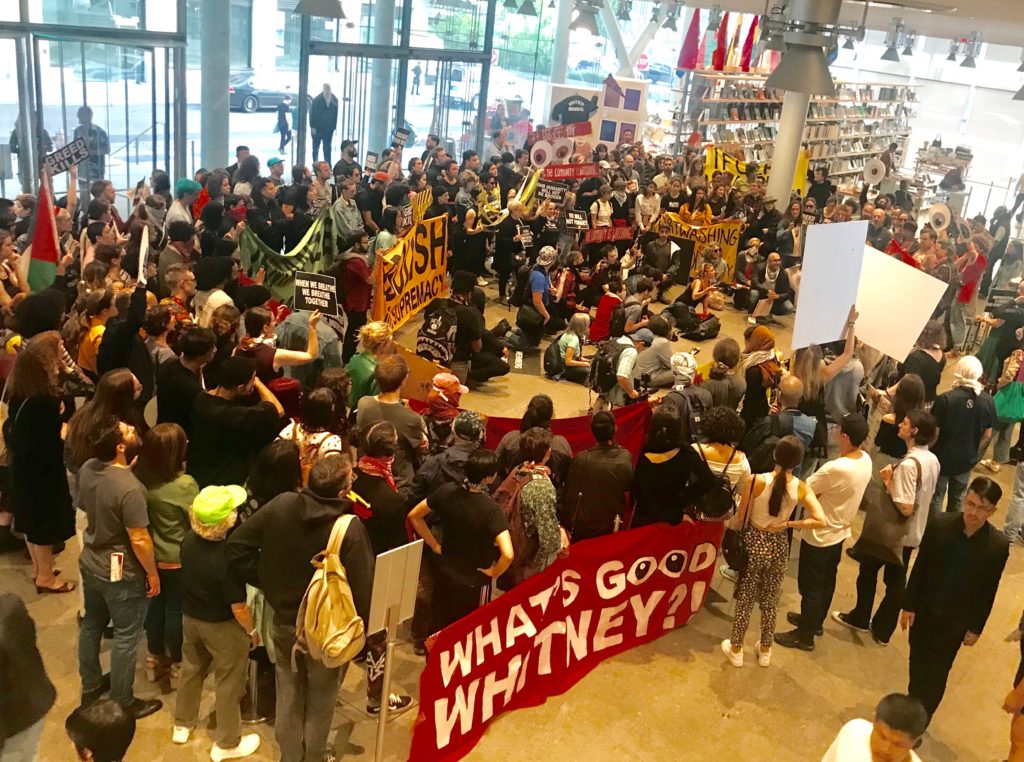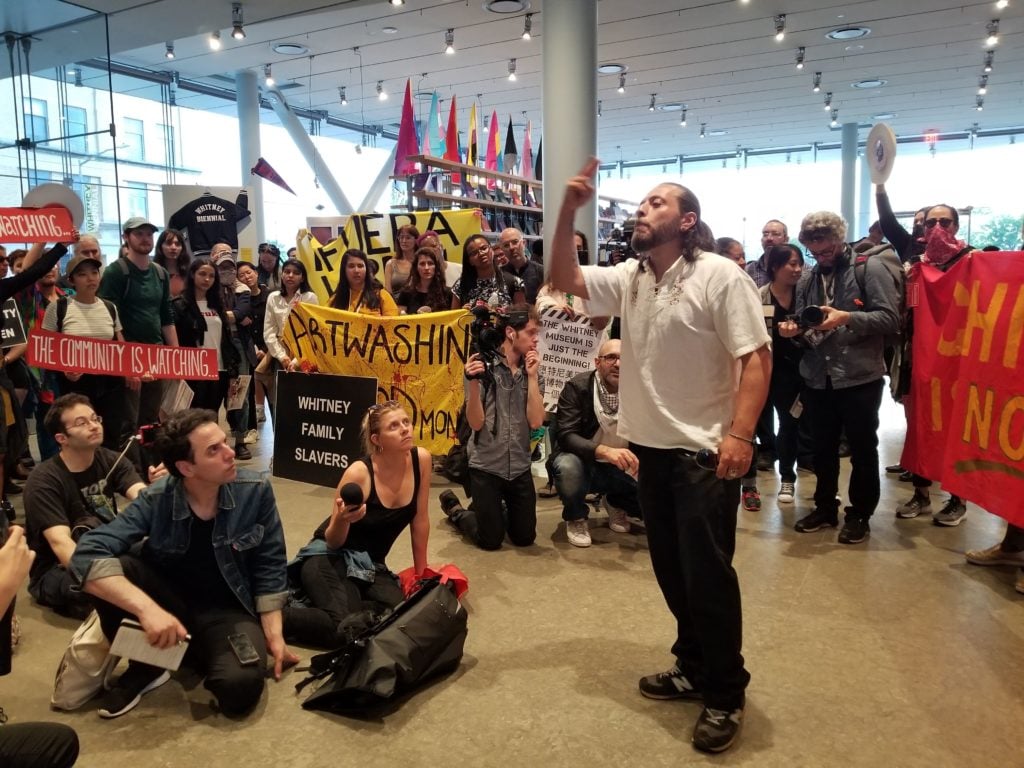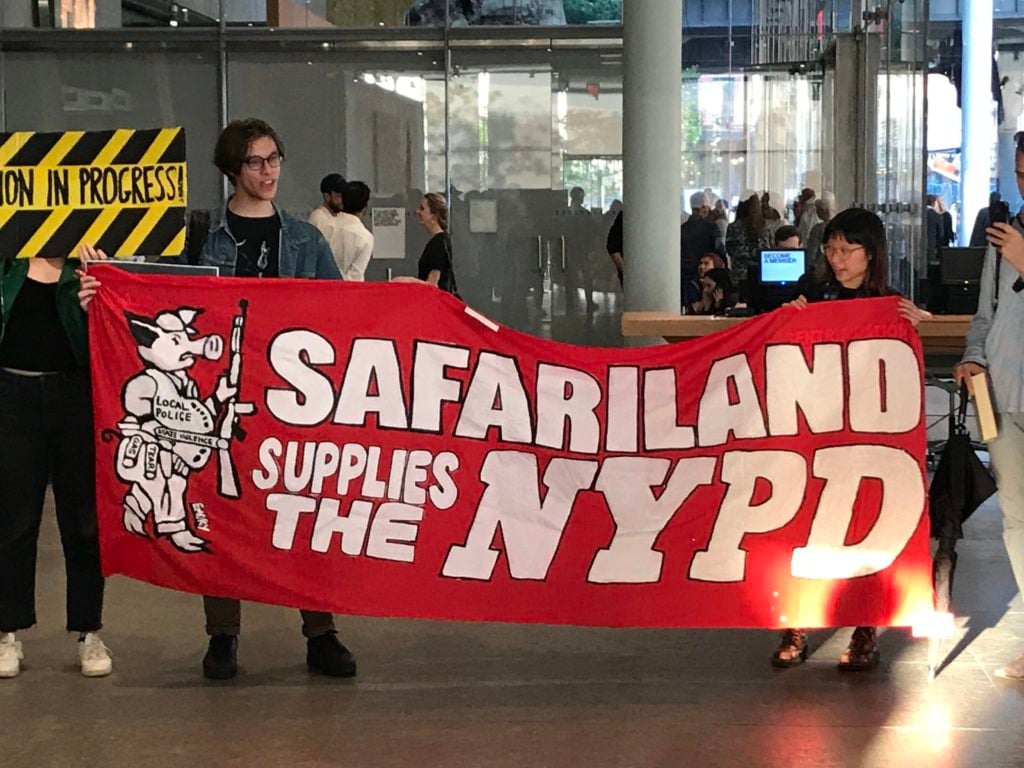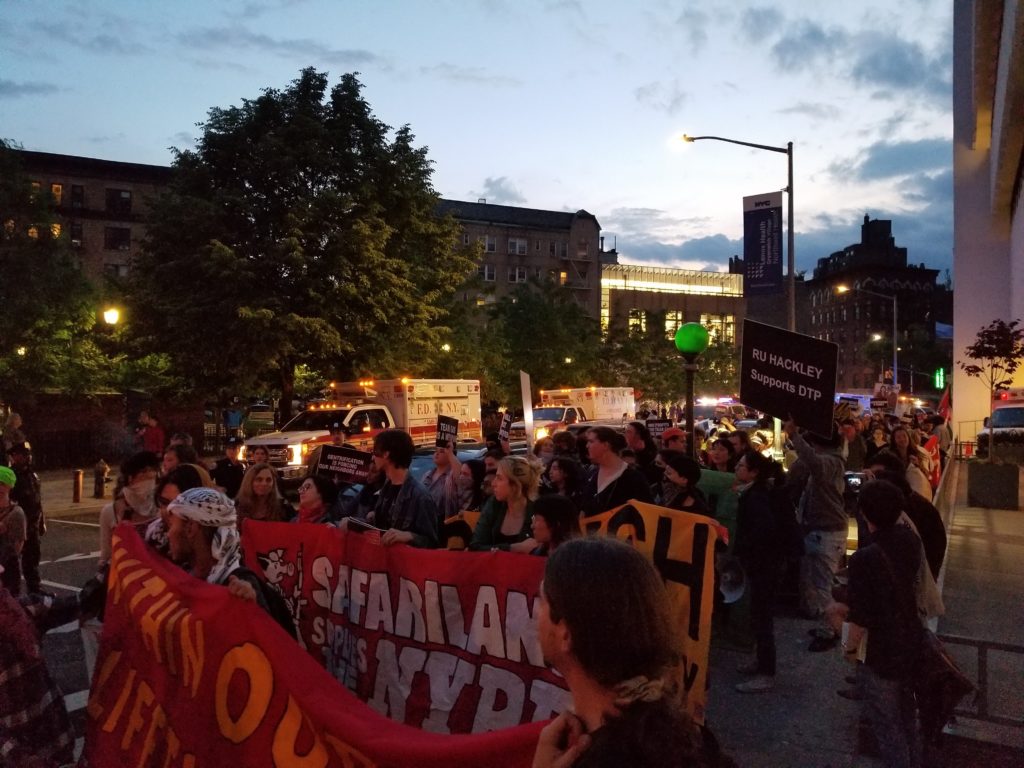Art World
‘Warren Kanders, You Can’t Hide!’ Protesters March From the Whitney Museum to the Controversial Trustee’s Home
Outside of Kanders's townhouse, activists pledged: "We'll be back."

Outside of Kanders's townhouse, activists pledged: "We'll be back."

Brian Boucher

“Warren Kanders, you can’t hide! We charge you with genocide!”
A group of about 200 protesters chanted that phrase last night while marching from the Whitney Museum of American Art to the home of the controversial vice chairman of the museum’s board, Warren Kanders, a short walk away in New York’s West Village.
The activists are demanding that Kanders be removed from the museum’s board because he owns Safariland, a company that makes munitions for police and military forces. The company also manufactures tear gas that has been used on migrants at the US-Mexico border, as well as protesters at Standing Rock and pro-Palestinian demonstrators, according to the activists. Safariland’s tear gas canisters were also spotted in Ferguson during the riots over a police officer’s killing of unarmed black teenager Michael Brown.

Protesters at the Whitney Museum. Courtesy of Decolonize This Place.
The protest was timed to coincide with Friday’s opening of the Whitney Biennial, lending high visibility to the final in a nine-week series of protests at the museum organized by groups including Decolonize This Place, Chinatown Art Brigade, Within Our Lifetime, and others.
For an hour, speakers in the lobby raised issues ranging from the links between art galleries and gentrification on New York’s Lower East Side to Israel’s treatment of pro-Palestinian protesters. Then the group set out for Kanders’s home, a destination that was revealed to the protesters only upon arrival.
“This is where the motherfucker lives!” screamed Shellynne Rodriguez, one of the group’s leaders. Some protesters carried a six-foot-tall replica of a tear gas canister, complete with mist pouring out of the top, to Kanders’s doorstep.
Kanders’s home was once described in Architectural Digest as an “art-filled sanctuary,” filled with works by artists such as Yayoi Kusama, Jeff Koons, and Laura Owens. But protesters warned Kanders (and his neighbors) in thundering chants that echoed through the Village’s narrow streets that even in that sanctuary they would not get much sleep until Kanders quits the board or is removed.

Protesters at the Whitney Museum. Photo: Brian Boucher.
Protests and calls for Kanders’s departure have been ongoing for months. Following a report in Hyperallergic about Kanders’s ownership of Safariland, museum staff wrote an open letter to director Adam Weinberg asking that he consider removing Kanders from the board.
Weinberg responded with a letter pointing out that museum staff do not hire board members. Kanders also replied in a letter, writing “I am not the problem the authors of the letter seek to solve,” and adding that “the politicization of every aspect of public life, including commercial organizations and cultural institutions, is not productive or healthy.”
Kanders was in attendance at the VIP opening of the biennial on Tuesday night, but at least one artist was conspicuously absent. Chicago artist Michael Rakowitz declined an invitation to participate in the exhibition because of what he terms “toxic philanthropy.” Meanwhile, the collective Forensic Architecture created a work for the show that uses machine learning to identify instances when Safariland’s “less lethal” munitions are deployed during the span of the exhibition.

Protesters marching from the Whitney Museum to the home of Warren Kanders. Courtesy of Decolonize This Place.
The mood was jubilant and defiant outside of Kanders’s home, where demonstrators called him “an enemy of the people,” echoing a notorious accusation by Donald Trump against the media.
“Fuck Safariland and fuck your tear gas!” they screamed. “Fuck Warren Kanders!” “This is for Ferguson!” “Your time is up!” “We are here for you!”
Protestors said that this fall is the “deadline” for the museum to remove Kanders from its board. “We could have shut the museum down today,” one poster read, but added that organizers were offering the institution “a final window to do the right thing.” But if Kanders remains, the poster warns, “our tactics will escalate further.”
Around 9 p.m., after two hours of chanting and marching, as the sky spat down a few drops of rain, the group wrapped things up with whoops and hollers and a promise: “We’ll be back.”